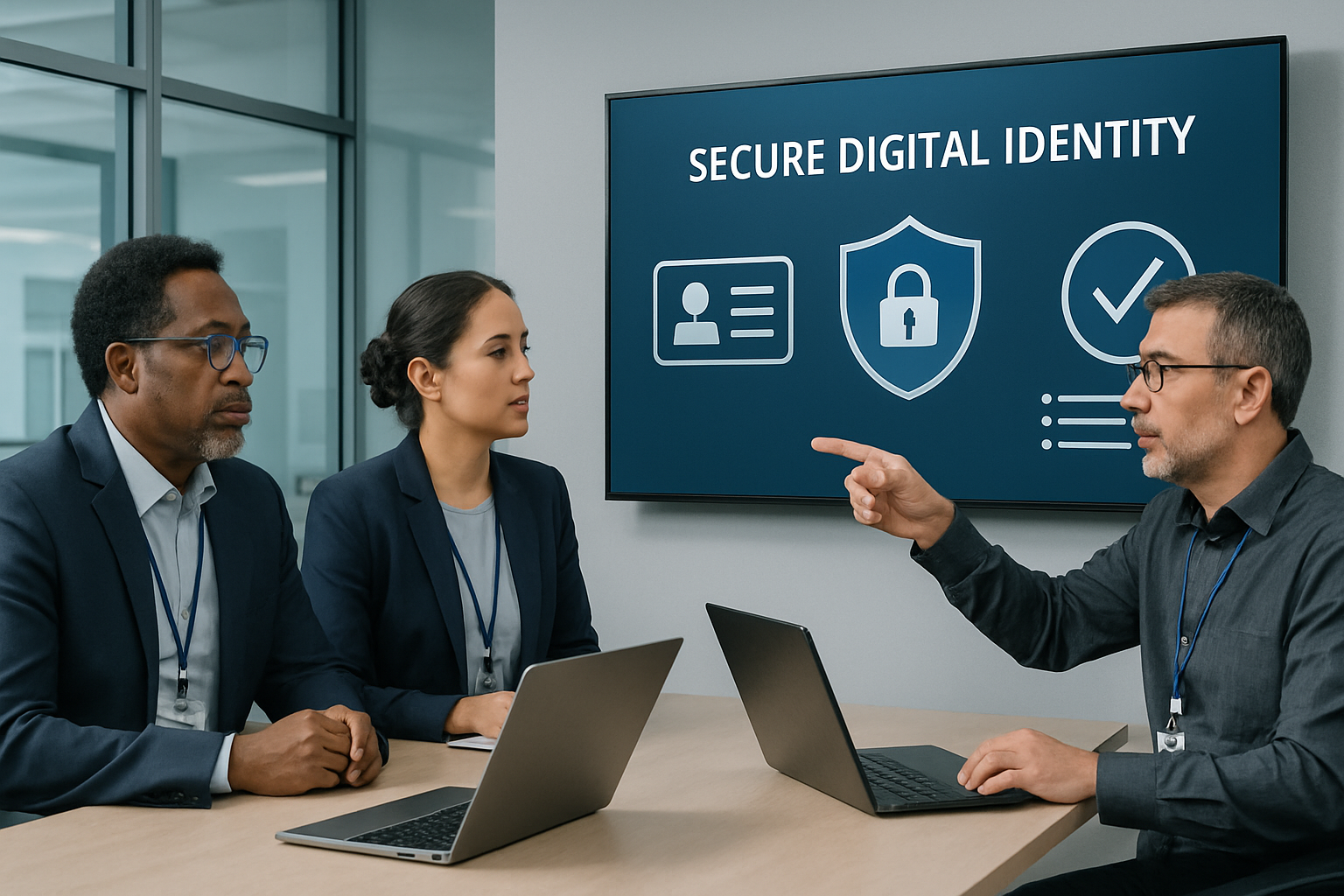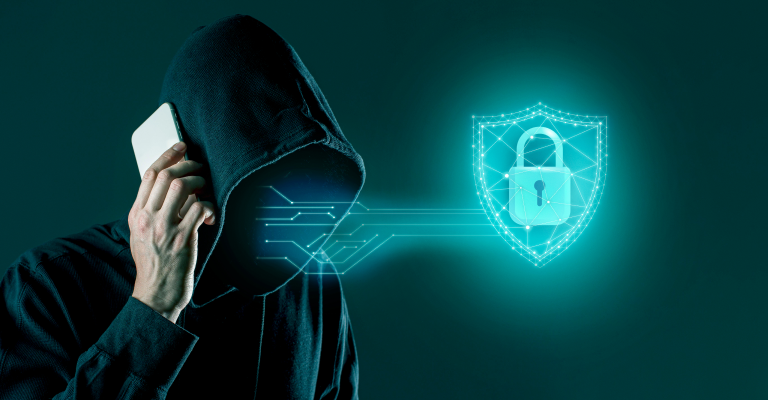Hey CIOs, IT Heads, and Public Sector Leaders—if you’re thinking about digital identity solutions, this one’s for you.
Let’s be honest: in 2025, identity is everything.
And yet, most organizations are still relying on outdated, patchwork identity systems—centralized databases, password-based access, clunky onboarding tools—that just aren’t built for today’s digital velocity.
Here’s a stat that’ll make you pause:
According to Grand View Research, the global digital identity solutions market was valued at $39 billion in 2024 and is expected to reach nearly $99 billion by 2030, growing at a 16% CAGR. That’s not just growth—it’s a clear signal that identity is becoming a core pillar of organizational security.
Why? Because the threat landscape is evolving faster than your firewall rules.
Credential-based breaches still account for over 60% of cyberattacks globally. Regulatory pressure is tightening. And AI-powered fraud tactics? They’re already here.
As a tech leader in a regulated industry, you’re not just expected to secure your systems anymore—you’re now the guardian of digital trust.
The good news?
Digital identity solutions—especially those powered by decentralized technologies like blockchain—are rewriting the rules of how we secure, verify, and manage identity across enterprises and public sector organizations.
Let’s break this down.
What Are Digital Identity Solutions?
Let’s clear the fog.
When we say digital identity solutions, we’re talking about the technology that helps verify who a person or system really is—across apps, devices, platforms, and networks without relying on outdated methods like usernames, passwords, or physical ID cards.
Think of it as your organization’s digital gatekeeper. It decides who gets in, what they can do, and how securely their credentials are managed across the ecosystem.
But here’s where it gets serious: in 2025, identity is no longer just an IT checkbox. It’s a core part of organizational security. Without secure digital identities, you’re leaving the door wide open for fraud, data breaches, and compliance nightmares.
There are different types of identity frameworks in use today:
- Centralized identity systems (still used by most businesses)
- Federated identity (like “Log in with Google”)
- And now, the rise of next-generation identity systems powered by decentralized, blockchain-based identity technology
Modern identity management for businesses is shifting toward privacy-first, tamper-proof verification models that go far beyond login forms. These systems are built to handle real-time access controls, multi-factor authentication, and even biometric inputs, all without compromising user experience.
Whether you’re in the public sector or managing enterprise-level infrastructure, implementing digital identity verification is no longer optional. It’s your first line of defense in a world where cybersecurity identity solutions are directly linked to business continuity.
And trust me, in this fast-evolving landscape, having the right identity foundation can mean the difference between being secure… or being the next headline.
Growing Risks of Traditional Identity Systems
Most organizations still rely on old identity systems—passwords, spreadsheets, outdated access controls. These setups may have worked a decade ago, but in 2025, they create more problems than they solve.
Here’s what’s going wrong:
- Too many entry points: With cloud apps, remote teams, and mobile access, there are more ways than ever for attackers to get in.
- Weak passwords: They’re still a major cause of data breaches. Employees reuse them. Attackers guess them or steal them through phishing.
- No real-time monitoring: Legacy identity systems can’t detect or respond quickly to unauthorized access.
- No central control: Many teams use different tools with different logins. There’s no unified view of who has access to what.
- Poor compliance tracking: Regulations like GDPR, HIPAA, or India’s DPDP Act demand clear records of identity access. Old systems don’t provide that.
This opens the door to real damage—identity theft, system breaches, data leaks, and in worst cases, shutdowns or legal action. If your team can’t prove who accessed what, and when, you’re exposed.
According to a 2024 IBM report, identity-based attacks are now the leading cause of security incidents in large enterprises. And the cost of a single breach? Over $4.45 million on average.
In short, sticking with outdated identity systems isn’t a low-risk decision—it’s a high-risk liability. If your organization is serious about preventing identity theft and meeting modern compliance requirements, it needs to move forward.
How Digital Identity Solutions Improve Security
Let’s talk about what actually changes when you replace legacy identity tools with a proper digital identity solution.
First, access control becomes smarter. You know exactly who’s accessing your systems, when, and from where. You can set roles, rules, and permissions that update in real time. This cuts down unauthorized access and human error.
Second, there’s no more reliance on static credentials. Most next-generation identity systems support multi-factor authentication, device recognition, and biometric checks. Even if a password leaks, attackers still can’t get in.
Third, you get built-in visibility. Every login, approval, or denial is logged automatically. That means your identity security for business systems is no longer a black box. Your security team can see threats as they happen, and compliance audits become much easier to manage.
Fourth, these systems are designed to work across platforms. Whether you’re using cloud services, on-prem tools, or both, digital identity technology helps your team secure access without creating friction for users.
And finally—everything is built for scale. You can onboard new users, revoke access instantly, or update security policies across your whole organization in minutes. That’s critical when you’re dealing with large teams or high-stakes data.
In 2025, these aren’t “nice to have” features—they’re standard. And without them, your enterprise identity security is stuck in the past.
This is why more organizations are moving to advanced identity management systems—not because it’s trendy, but because the old way simply isn’t safe anymore.
Rise of Decentralized Identity
A big shift is happening in how identity works.
Instead of storing user data in one central system, organizations are now adopting decentralized identity, a model where users control their own identity and share only what’s needed.
At the core of this model are Decentralized Identifiers (DIDs). Unlike email addresses or usernames, DIDs are not tied to a central provider. They’re unique, cryptographically secure, and controlled by the user.
On top of DIDs, you have Verifiable Credentials (VCs). These are digital proofs like a degree certificate, a work ID, or a health record that can be verified without needing to call or trust the original issuer every time. Once issued, a VC can be shared and verified anywhere, without exposing sensitive data.
This approach is called Self-Sovereign Identity (SSI). It puts the user—not the system in charge of their identity. The system simply checks the validity of the credential, not who’s storing it.
What makes this even more powerful is Zero-Knowledge Proofs (ZKPs). These allow a user to prove something is true (like “I’m over 18” or “I work for this company”) without revealing the actual data. It’s privacy by design, not privacy by policy.
This model solves several problems:
- No central data store = less risk of large-scale breaches
- Users share only the minimum information
- Organizations can verify identities faster, with more confidence
- It’s scalable, portable, and reduces fraud
Many governments and large businesses are now exploring decentralized identity frameworks as the future of secure identity verification. With the right tools, including platforms like EveryCRED, you can start implementing these standards without having to build from scratch.
This shift isn’t hype. It’s already happening and it’s setting the new baseline for business identity security measures in regulated sectors.
Key Benefits for Public Sector & Enterprises
Moving to digital identity solutions isn’t just about stopping attacks. It brings real, operational advantage, especially for public sector teams and large enterprises.
Here’s what changes when you implement modern identity systems:
1. Better access control across departments
Government agencies and large organizations deal with dozens of teams, vendors, and systems. A unified identity layer ensures that only the right people have access to the right data, at the right time. No more chasing IT tickets to remove old employee access.
2. Reduced identity fraud
With verifiable credentials and real-time checks, it’s much harder for someone to fake their way into your systems. Every identity can be traced, verified, and audited without slowing things down.
3. Faster onboarding and offboarding
New employees, contractors, or citizens can be verified and added to systems in minutes. No paperwork. No delays. Access can be removed instantly when someone leaves. This is a big deal for organizational identity theft protection.
4. Privacy built-in, not bolted on
Using decentralized identity technology with zero-knowledge proofs, sensitive data is never stored unnecessarily. This helps your organization stay compliant with modern data protection laws like GDPR, HIPAA, and India’s DPDP Act.
5. System-wide visibility and audit trails
Every login, every permission, every update, logged automatically. This helps during internal reviews, external audits, or if something goes wrong.
6. Interoperability with other systems
Most digital identity frameworks today are designed to work with existing IAM, HR, or ERP systems. That means you can upgrade identity management without replacing everything else.
These aren’t just technical upgrades. They improve how your organization works from internal processes to public services while reducing risks and manual work.
Next up, let’s look at who’s already using these systems and where the industry is headed.
Real-World Adoption & Industry Trends
This isn’t theory. Many governments and enterprises have already started rolling out next-generation identity systems and the momentum is growing.
Let’s start with the public sector.
The European Union is leading the way with eIDAS 2.0, a regulation that supports digital identity wallets and verifiable credentials for all EU citizens and businesses. The idea is simple: citizens can prove who they are without carrying physical documents, and governments can verify these identities instantly.
India is also expanding its digital identity infrastructure beyond Aadhaar. With a growing focus on digital identity compliance and user privacy, public institutions are beginning to test decentralized identity pilots across health, education, and finance sectors.
In the enterprise world, industries like finance, healthcare, and logistics are under heavy compliance pressure. Identity fraud costs are rising. So, companies are integrating advanced identity management systems that support DIDs, VCs, and real-time verification to reduce risk.
Big players like Microsoft (with Entra), IBM, and Mastercard are already offering tools to support secure identity verification and business identity security measures at scale.
What’s clear is this:
Whether driven by regulation, rising fraud, or the need for faster access control, digital identity technology is no longer a niche investment. It’s becoming a baseline infrastructure requirement—just like cloud or cybersecurity.
The organizations that start early will not only reduce risk—they’ll be in a better position to deliver secure, efficient, and compliant digital services in the years ahead.
How to Start with Digital Identity Solutions
If you’re leading IT or security for a government department or enterprise, you don’t need a complete system overhaul on day one. But you do need to start.
Here’s how to move forward with the right foundation:
1. Map your identity landscape
Take stock of who’s accessing your systems—employees, vendors, citizens, partners. What tools are they using? Where are the gaps? This gives you a clear picture of your current identity exposure.
2. Identify critical systems that need protection
Start with high-risk areas: HR, finance, internal admin portals, citizen-facing services. These are often the biggest targets for identity-based attacks and should be prioritized.
3. Choose a solution built for compliance
Whether it’s GDPR, DPDP, or industry-specific rules, make sure your identity system supports digital identity compliance by default. Look for built-in audit logs, role-based access, and integration with existing tools.
4. Start with verifiable credentials for specific use cases
Pilot a small implementation, employee onboarding, vendor access, or citizen login with verifiable credentials and secure identity frameworks. This allows you to test and learn without overcommitting.
5. Evaluate support for decentralized identity
Not all platforms are future-ready. Choose a provider that supports DIDs, SSI, and next-generation identity systems, so you’re not locked into another legacy platform.
6. Pick the right partner
You don’t need to build from scratch. Choose a provider like EveryCRED that understands both the tech and the compliance landscape, and can help implement a phased rollout aligned with your goals.
Modern organizational security starts with better identity. It’s not just about preventing breaches—it’s about building a secure foundation your entire team can trust.
Conclusion: It’s Time to Rethink Identity
Identity is no longer just a login screen. It’s your first line of defense and in many cases, your biggest vulnerability.
As the risk of identity theft grows and regulations tighten, relying on outdated systems is no longer a safe bet. Digital identity solutions are not just more secure, they’re smarter, faster, and built for how organizations work in 2025.
By moving toward verifiable credentials, decentralized identity, and zero-trust frameworks, you can improve security, reduce manual overhead, and stay compliant across all levels of your organization.
The public sector and enterprise world are already shifting. The question is, will your organization lead, or play catch-up?
If you’re looking to start with secure digital identities, we’ve built EveryCRED for you.
EveryCRED helps governments and enterprises implement next-generation identity systems powered by decentralized technology. Whether you’re launching a pilot or modernizing a full-stack identity infrastructure, we make the rollout simple, compliant, and scalable.
Visit everycred.com to book a free consultation or see how our platform works.
Let’s secure your identity layer—before someone else finds the gaps.

 6th August, 2025
6th August, 2025 



